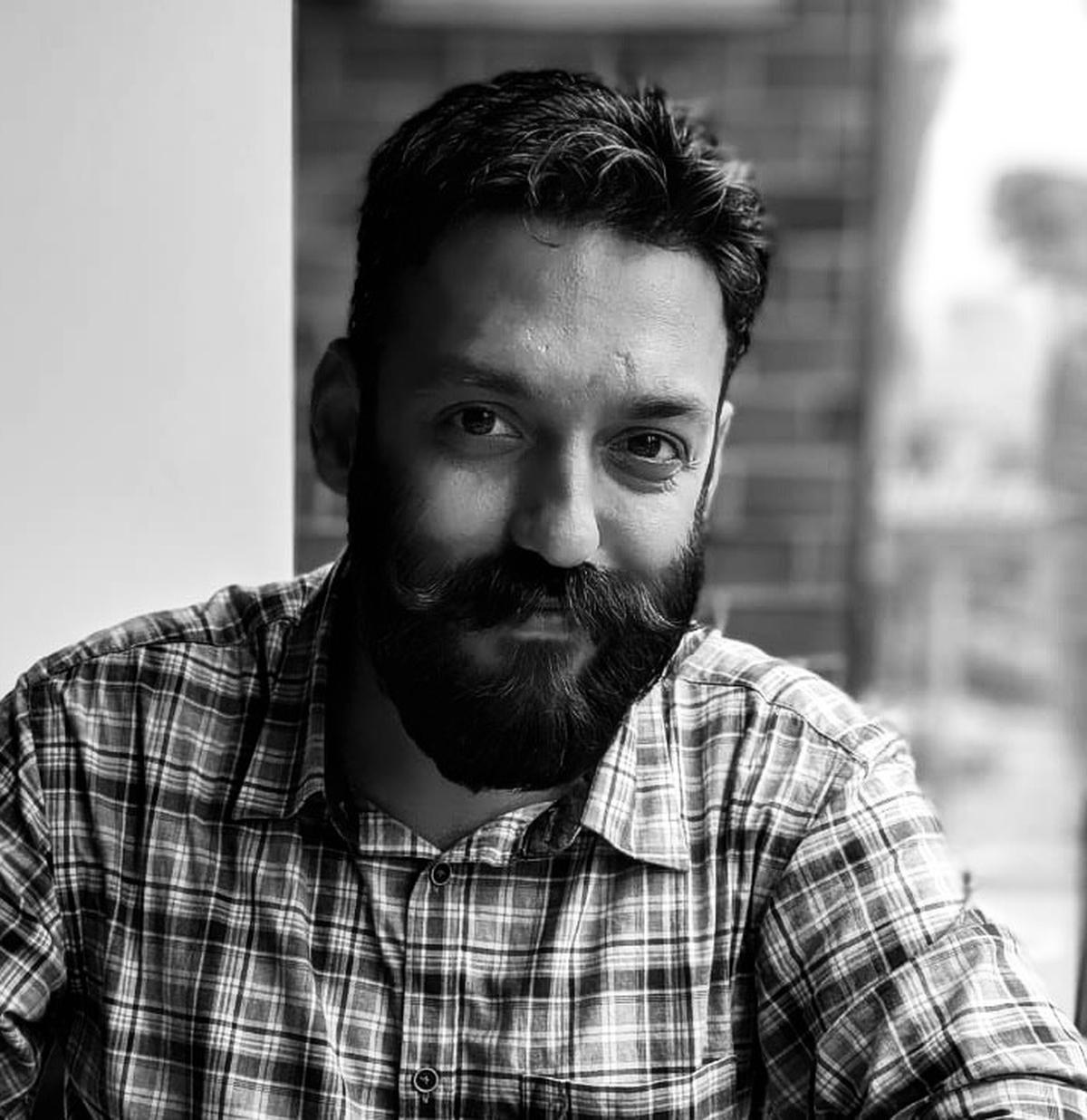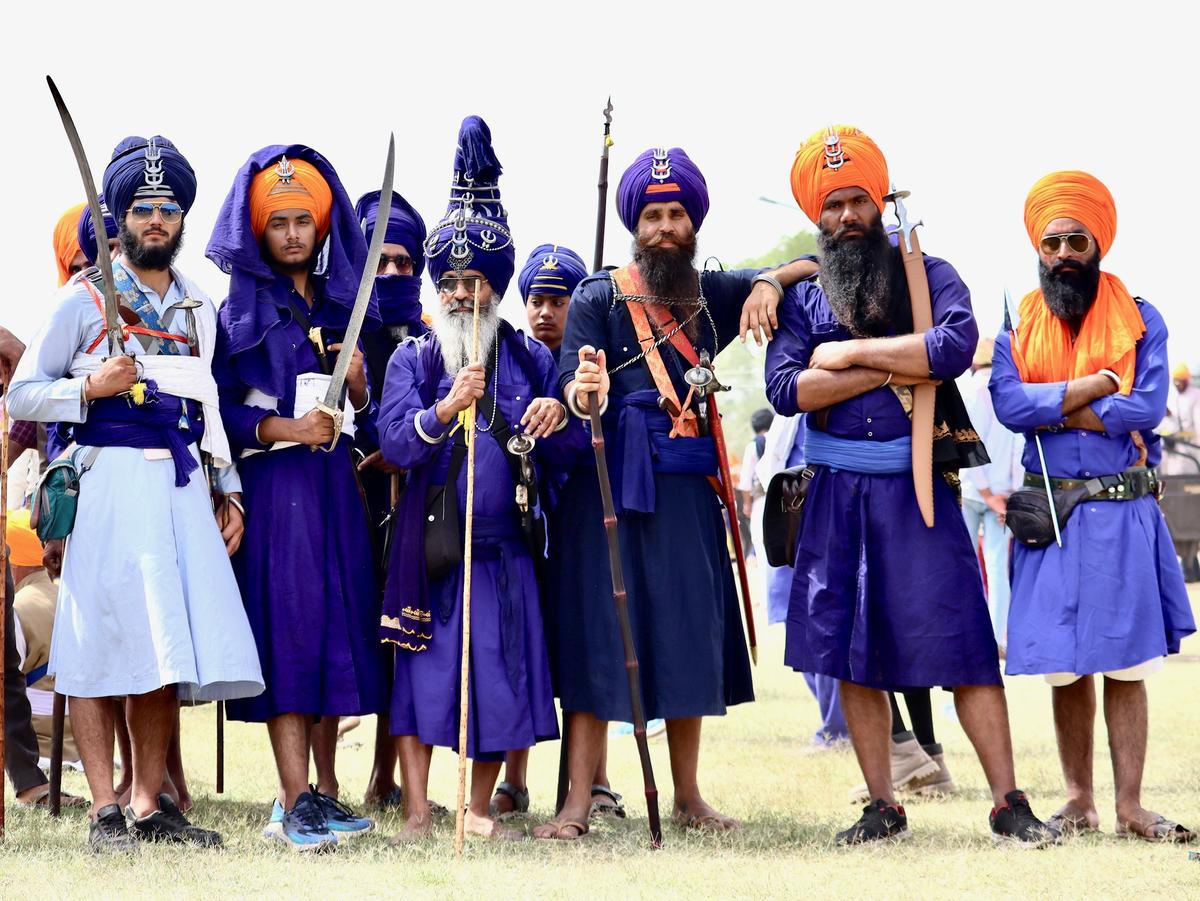Ilkal sarees worn by women in North Karnataka
| Photo Credit: Navaldeep Thareja
“You are not a Bharwad if you wear a saree,” is how elderly Bharwad women chide young women from their community. Navaldeep Thareja, a textile engineer from Sangrur in Punjab, who often visits little-known places across India to meet craftspeople, artisans, weavers, and tribal people and photo documents their designs and stories, starts the conversation with Tangaliya weaves. The Bharwad women wear Tangaliya shawls, woven by the Vankar community in Surendernagar and Kutch, Gujarat. “Tangaliya is a 700-year-old traditional hand weaving technique where contrasting colour threads are twisted into groups of four or five warps to create unique beadwork. It is worn by married women as a wrap around the lower body. It is done only on wool traditionally, and women wear wool through the year,” he explains.

Navaldeep Thareja,
| Photo Credit:
Special Arrangement
Navaldeep was in Coimbatore recently to share his stories to an eager group of costume design and fashion students of PSG College of Arts and Science. “It’s been 25 years of the department and they have invited me. I have documented the Dongria Kondh community from Odisha who craft Kapra Ganda embroidered shawls, made by the women to gift their brothers,” says Navaldeep adding that nomadic groups like Rabari Grasiya Jat from Kutch, Gujarat and Lambani from Banjara in North Karnataka wear unique embroidered attire, repurpose their jewellery, and sport body tattoos.

Nomadic groups like Lambani repurpose jewellery
| Photo Credit:
Navaldeep Thareja
He also displayed a variety of fabrics that gave a peek into printing techniques like ajrak (Gujarat), kalamkari (Andhra), dabu (Rajasthan), and bagh (Madhya Pradesh) and also bandhani/ bandhej/ sungudi, an ancient tie and dye technique from Gujarat, Rajasthan and Tamil Nadu. Did you know ilkal sarees come with two pallus in silk and cotton and that women wear alternatively based on the occasion? He asks and explains, “Ilkal is an ancient weaving cluster that has its history dating back to the 8th century, originating at the Bagalkot district of Karnataka. The burst of red in the signature style ilkal pallus is exclusive to this weave. The saree has a unique weaving and knotting technique (topi teni),” he says adding that the motifs are inspired from jowar (sorghum millet) grown in the region known as tope teni while latthi gunhi designs are inspired from rolling pins used in kitchens for making rotis.
Navaldeeps presented his coffee table books Todas – The Guardians of Nilgiris, Ilkal – Ilkal sarees, Sartorial Scenes from North Karnataka,Dongria Kondh – Kapra Ganda embroidered shalws and Tangaliya – Connecting Communities with Daana Weaving. “All the photographs in are a result of my travels across various regions of rural India where I lived with indigenous people for months.” His photographs have been featured in Lonely Planet India Magazine, National Geographic India, to name a few.

Nihang Singhs in indigo dyed clothing at Sri Anandpur Sahib – Hola Mohalla Festival in Punjab
| Photo Credit:
Navaldeep Thareja
As he spoke of Nihang Singhs – the blue sikhs who use indigo for their dresses in Bana, Punjab, he also got specially curated samples that showcased the technique and the process involved. “ I am here to share knowledge gained from the communities. This makes students familiar with traditional techniques, cultural diversities and cultural identities. They also learn the need to use resources ethically, idea of reuse and reutilise,” says Navaldeep who is now set to document weaving traditions of tribes in the northeast. “There are multiple tribes, multiple weaves. Though language was a barrier, I have managed to establish a human connection. That is the key.”
Follow @behrupiaa on Instagram to know more
Published – October 04, 2024 05:03 pm IST